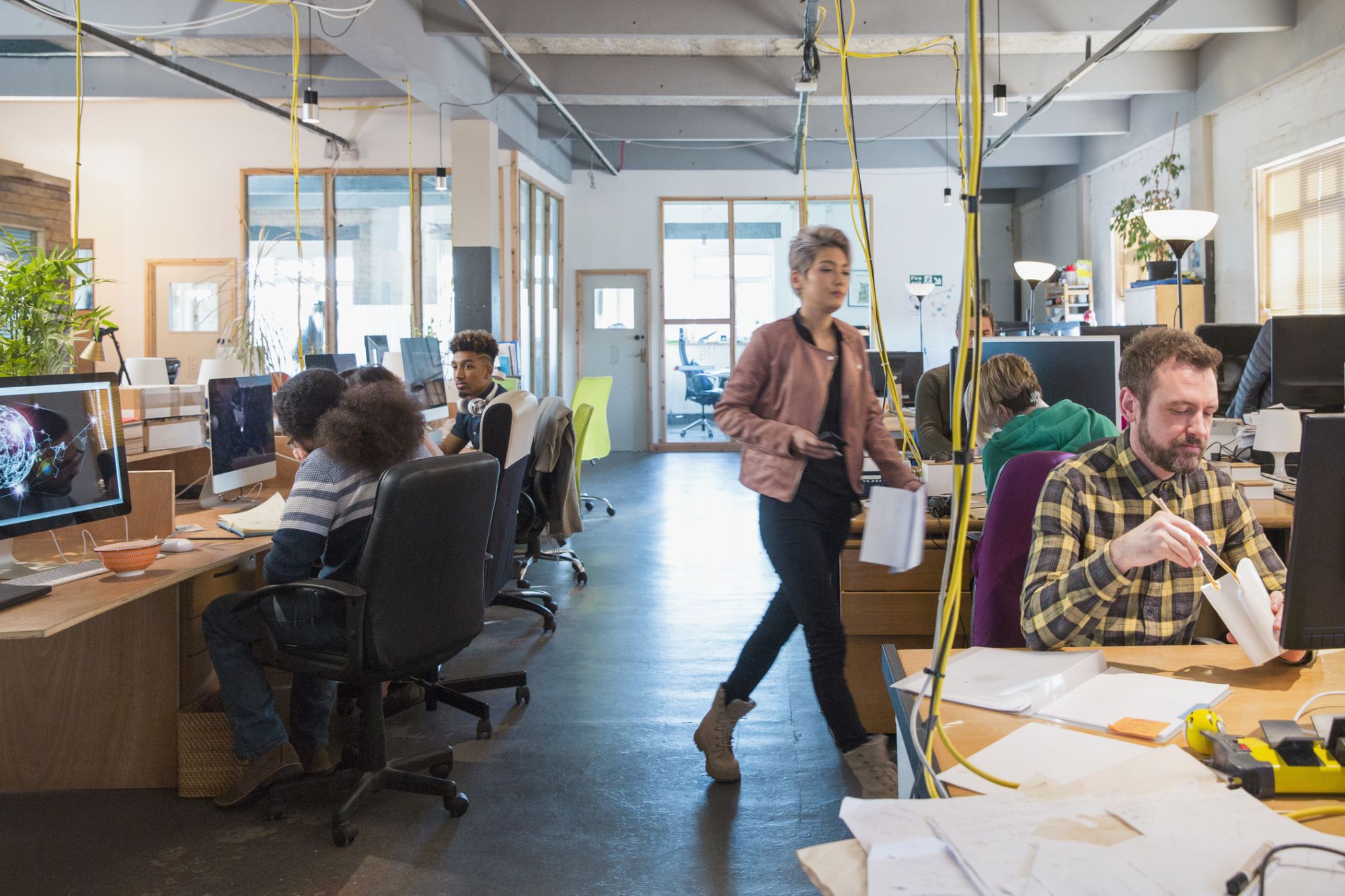4 Benefits That Explain Why Large Companies Are Increasingly Turning to Coworking Having trouble recruiting in this tight labor market? Your remote workers might be more inclined to work for you if you offer a coworking option.
By Doug and Polly White Edited by Dan Bova
Opinions expressed by Entrepreneur contributors are their own.

If you picture "coworking" as a group of tech-startup millennials sitting around on second-hand furniture in a common space, think again. Today's professional coworking sites attract a diverse array of companies and individuals as members. Most also provide chic environments with such amenities as 24/7 access, custom coffees and teas, honor bars and cafes, high-tech security, private offices, workout facilities, high-end furnishings, social and networking events, learning opportunities and much more.
Related: How Coworking Impacts Innovation for Startups and Small Businesses in the U.K.
"Coworking" is typically defined as membership-based workspaces where diverse groups of freelancers, remote workers, and other independent professionals work together in a shared, communal setting. As these alternative work settings have matured, they've begun to attract large enterprise clients who see these spaces as a solution to some of the tough challenges they face.
Thinking of getting in on the ownership or management side of this trend? We can share some of our experiences and the lessons we've derived as we've grown Gather, our own new network of coworking spaces.
You can recruit from diverse geographic locations
Sometimes, large organizations are unable, or don't choose to, entice enough workers to work at their corporate-headquarter locations. But this no longer has to be a setback. Motivated by the tight labor market and enabled by technology, organizations are now recruiting talent from outside their (limited) backyards.
Professional coworking provides a home to many of these far-flung teams and individuals.
One reason why this works for remote workers is that they appreciate the more structured work setting which coworking provides. There are also studies that show that certain workers are more productive, happier and more creative in an office environment. These workers want to avoid the social isolation that can accompany working from one's kitchen table. Finally, coworking provides the types of amenities these employees would find if they worked at a corporate headquarters.
For example, our Gather membership has included employees from Google, Citibank and International Paper, to name just a few.
You can fuel creativity.
Large organizations sometimes find that coworking's collaborative environment boosts the creativity of its teams. Moving your development, research, marketing, design or other teams from a more bureaucratic corporate environment to a coworking culture can breathe new life into these creative types.
Additionally, collaborating with other coworkers from outside the corporate team can spark new ideas. Whether they're making a permanent move or seeking an alternative space for meetings, events or an occasional day away, employees often find the change of environment energizing.
Gather often hosts meetings for our local Fortune 500 companies, universities and colleges and other large organizations. We also make a permanent home for creative teams from the likes of PRA, Red Hat and others.
Related: What Will Coworking Spaces Look Like in 2020?
You can provide client companies an easy means for expansion.
Larger organizations looking to expand into a new market often use coworking to assist in that leap. These large firms will make a temporary headquarters using coworking and focus on growth, leaving the minutiae of setting up an office to the coworking company.
Coworking also gives these rapidly expanding organizations the flexibility to take more space, as needed, until they reach a point where finding offices outside of coworking makes sense. These geographic moves often start with one person, then quickly grow into teams of five, ten or more.
Professional coworking can normally accommodate teams ranging from 1 to 20 or more. These types of members at our coworking locations include Hickok Cole, an architecture firm from Washington, D.C.; Diversant, an IT staffing company from New Jersey; and Accuvein, a medical technology company, from New York.
You can help companies be more cost-effective.
While, on average, coworking's cost per square foot exceeds that of renting traditional office space, when you dig, the numbers make sense for many large organizations.
A typical commercial lease length is between three and five years. And that can help companies, which tend to have a hard time projecting exactly how much space they will need in the coming months or years.
Consequently, they'll often take more space (at least initially) than is necessary. Coworking organizations can be more flexible. Membership agreements at most professional coworking organizations range in length between 30 days and one year. This gives corporate clients the flexibility they need to scale up or down, paying only for the space they need that month.
If employees are more productive, happier and retain longer in coworking environments, then the potential savings in hiring costs and the benefits of increased productivity add to the case for coworking. This is why we concur with one of our local economic development directors, Garret Hart, who recently said, in an address to our local business community, "Coworking is the way work is going."
We concur even more with Bernice Boucher, managing director of workplace strategy at JLL. She said: "With a growing number of companies becoming curious about shared space, it's only a matter of time before coworking becomes an integral part of the corporate real estate toolkit."
Related: How Coworking Space The Wing Has Helped Women Soar
For all these reasons, if you run a large organization, perhaps you too should take a hard look at the benefits that teaming up a professional coworking organization as a strategic partner can bring.










